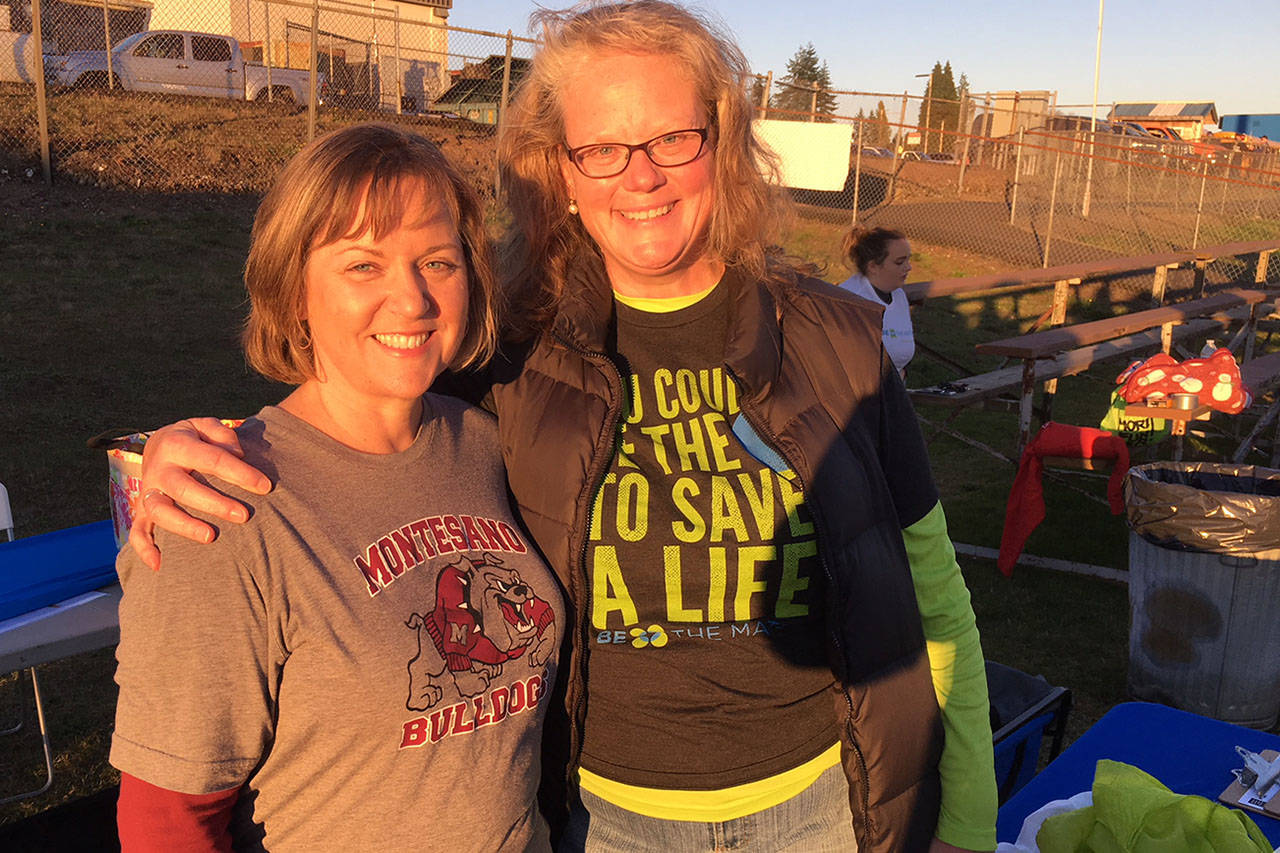A booth to raise public awareness on the need for volunteers to sign up for the national bone marrow registry was set up at the Elma/Montesano Civil War football game at Davis Field in Elma on Oct. 27.
Montesano teacher Lori Bialkowsky, who was instrumental in organizing the registry drive, explained that the immediate inspiration came to her from Montesano Junior/Senior High School counselor Tami Herzog who currently is undergoing treatment for multiple myeloma, a form of blood cancer, at Seattle Cancer Care Alliance.
Bialkowsky and a handful of student volunteers were joined on Oct. 27 by Tori Fairhurst of Olympia, a regional representative for national bone marrow donor program “Be The Match.”
Fairhurst explained there are thousands of patients whose only hope of survival is a marrow transplant from a total stranger because they weren’t able to find a match through family members. Seventy percent of patients are unable to find a match through siblings, Fairhurst said.
“Patients without matches are absolutely desperate and kind of in a panic,” Fairhurst said. “Not all patients find a match. That’s the big deal. Three percent of Caucasian people never find a match. Between 20 and 34 percent of people with diverse heritage never find a match as of today. It doesn’t mean that there is not a match — it means the match hasn’t signed up yet.”
According to further figures provided by Fairhurst, 20 percent of Hispanics, 23 percent of Native Americans and Alaska Natives, 28 percent of patients with Asian heritage, and 34 percent of patients with African heritage never find a match. Reasons involve the complexity of tissue types and a lack of potential donors on the registry, Fairhurst said.
“Tissue types are inherited, so people are going to match somebody who shares their ancestry, which is why this really matters. It has nothing to do with blood type,” she said.
Fairhurst said she wishes to dispel some of the myths surrounding donation, some of which have been propagated by television programs. Marrow donation is done under total sedation and is actually minimally painful. Registration itself is simple, involving the completion of forms and a cheek swab, and only about 1 in 40 of those who register will be ever be called up for further testing to determine a match.
“There’s a woman who signed up 13 years ago. She donated two weeks ago,” Fairhurst noted.
Though new registrations were being taken at the drive on the Oct. 27, “Be The Match” isn’t immediately focused on the numbers of those signing up, Fairhurst explained.
“Our goal is education. Because if we do the education piece right, the registration is going to take care of itself,” she said.
Herzog, who spoke to the The Vidette last week from Seattle Cancer Care Alliance where she is undergoing chemotherapy, said she’s glad Bialkowsky had organized the drive. She said she is serving as her own donor of stem cells, at least at this stage in her treatment for multiple myeloma, which she described as incurable but potentially manageable.
“It brings awareness to everybody,” Herzog said of the drive. “It’s not just for me specifically, because I am my own donor this time around.”
Herzog added that she is thankful for all the community support she has received during her illness.
Donors aged 18 to 44 are preferred for the national registry. Older persons can sign up as well, though it involves a $100 fee. Those interested in registering can do so online at Join.BeTheMatch.org/EastCountyTeam.


